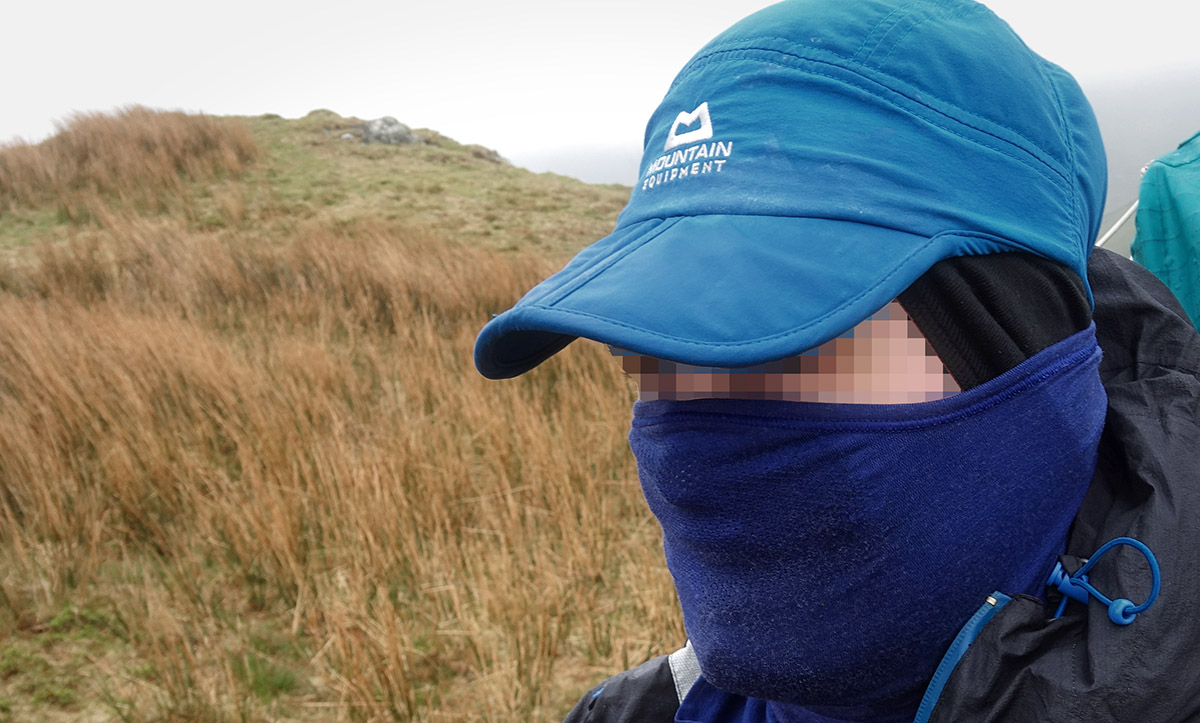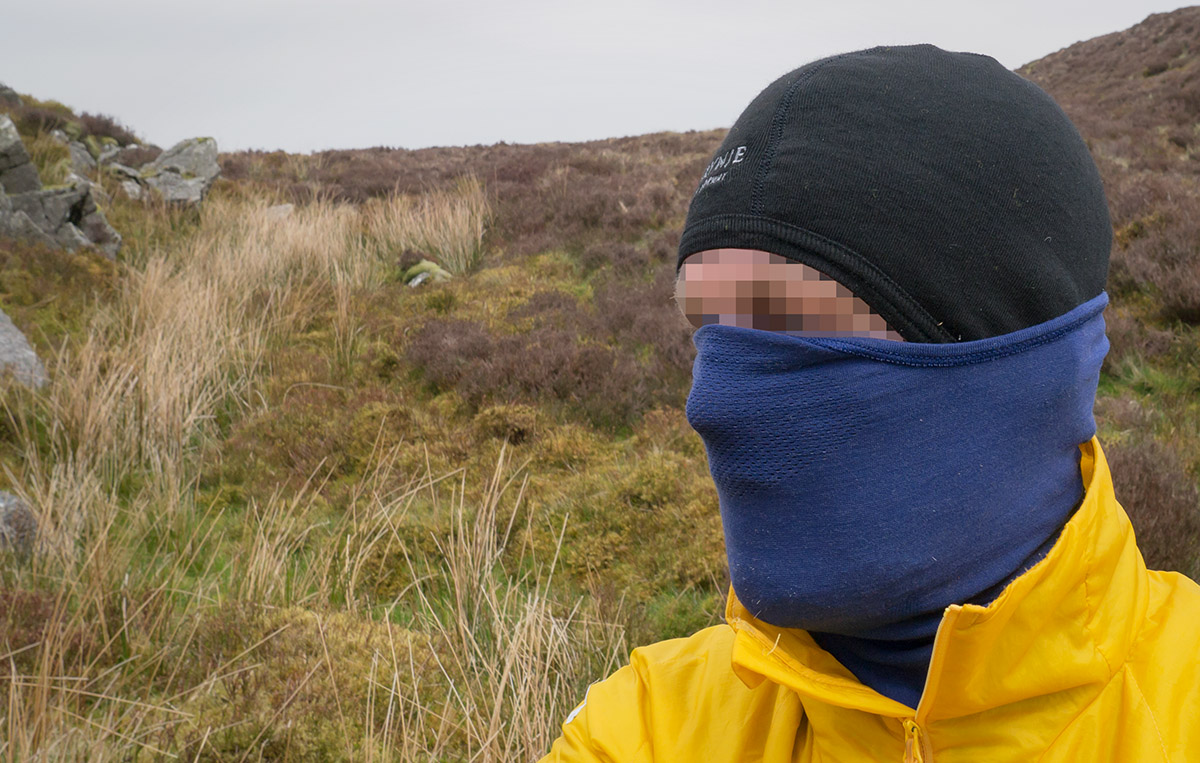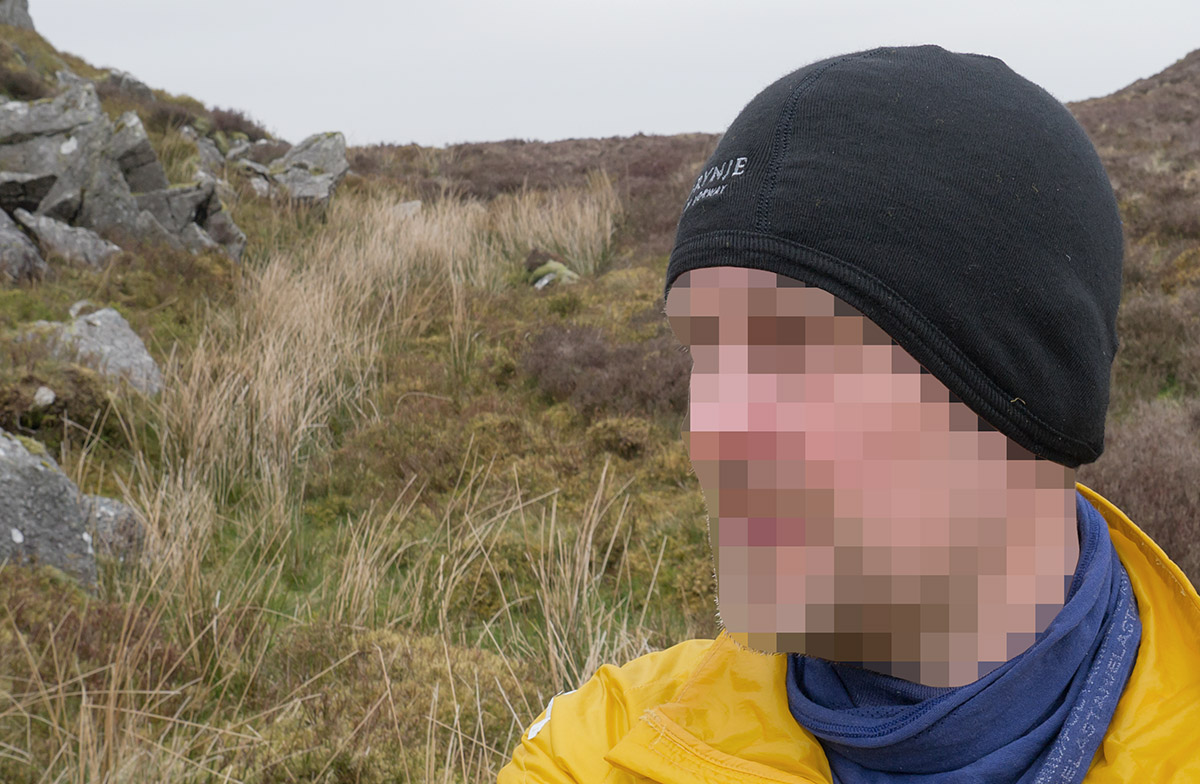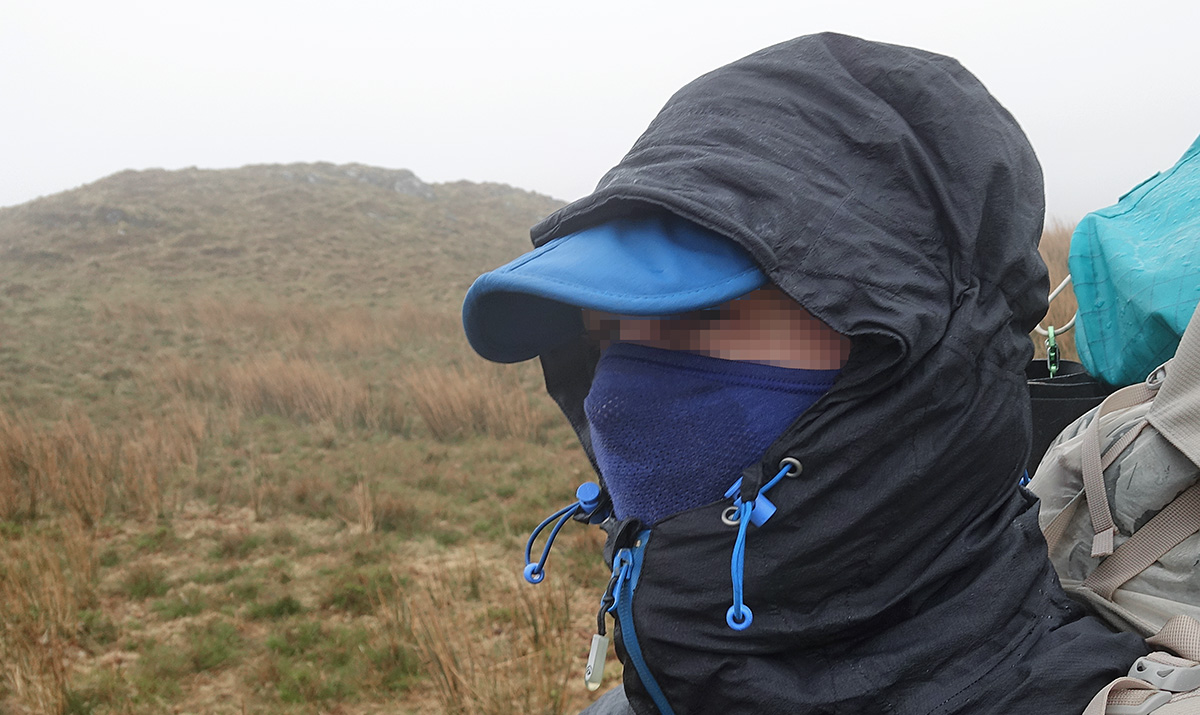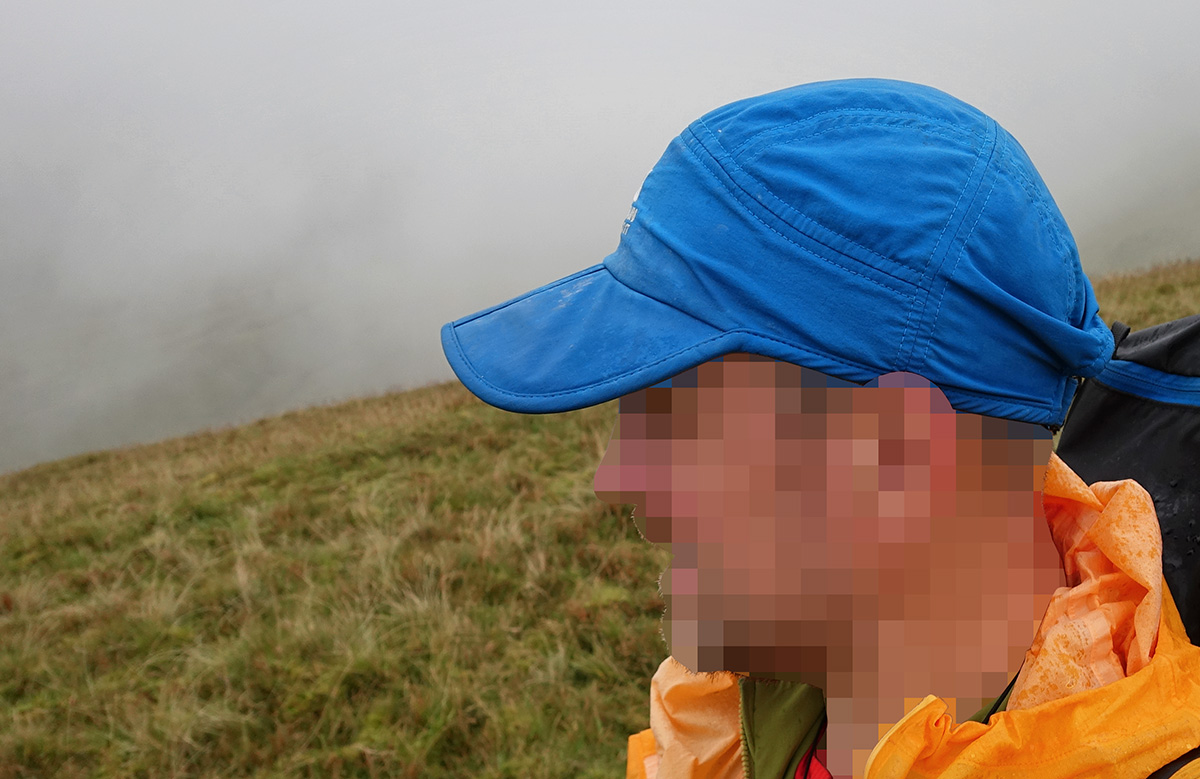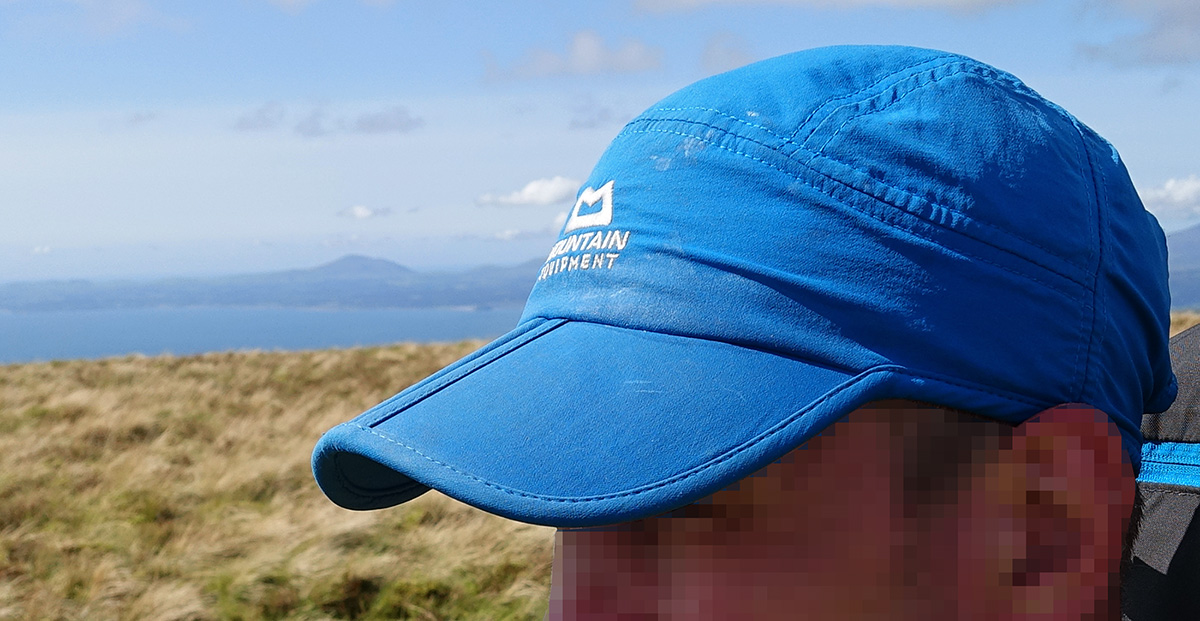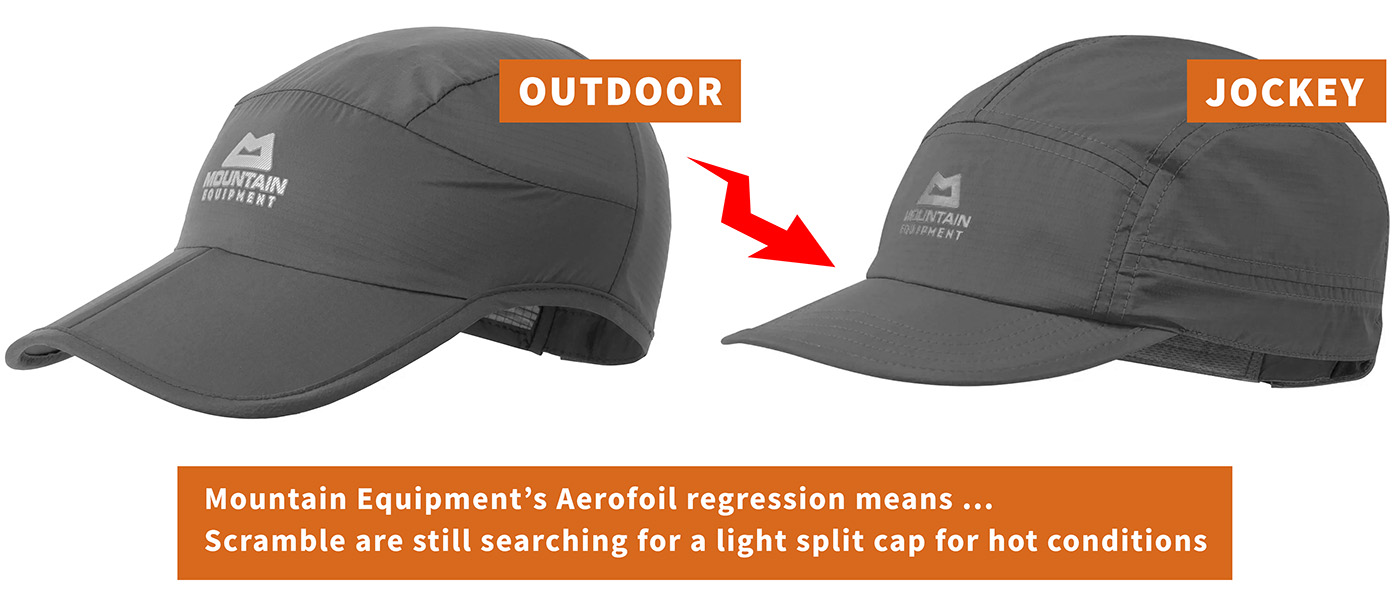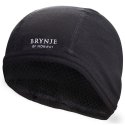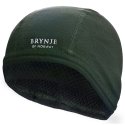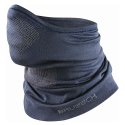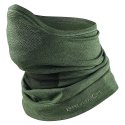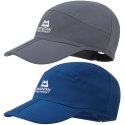Beanies, Balaclavas & Caps for Dynamic Activities
Special Mentions
Over time we've come across a number items that have really impressed us and we'd like to draw attention to, but ...
- either they don't quite fit into our rather strictly defined / narrow categories, or
- they are, or are highly likely to be, our top-rated recommendations, but may require some more testing, or
- due to their high price-point, they cannot compete with our existing recommendations (mainly on the value score), or
- they will become our top choice, but only if and when our existing recommendation becomes unavailable (i.e. this item is the current heir in waiting but is just marginally edged out by our current recommendation).
Normally, these Special Mention (SM) "reviews" don't get a rating score and may receive less in-depth coverage, but this is not the case here. Instead when each item has had sufficient use in relevant conditions, we'll flip this SM review to full review status and each item will have a rating and be featured in our catalogue.
Test subject: Head circumference: 57.5cm (22.5") = Medium
Test items: Size stated in each review (generally one size)
Kit Tests: Spring, Summer, Winter
Disclaimer: None required (item not provided by manufacturer)
Scramble Review
Contents
- Introduction
- Part 1: Beanie + Balaclava Combo for Active Sub Zero Use
- - Beanie: Brynje Super Thermo Helmet Hat
- - Balaclava: Brubeck M-Pro Half Balaclava
- Part 2: Caps
- - All-Round Softshell Cap: Mountain Equipment Squall Cap
- - Hot Weather Cap: [ still searching ]
- Product Images
Introduction
As many of the items in this review work in combination, we've decided to reorganise our headwear reviews into two main categories:
- Thermal headwear for static use in sub zero conditions
- Headwear for active use (high output / dynamic activity) in all conditions (but with a primary focus on protection from the cold).
This review covers #2: a light split cap for hot summer conditions and an ensemble for active use in the cold; a far more thorny problem to solve as we outlined in our review of the now discontinued Bergans of Norway Varde Beanie:
However, what we require from [headwear] intended for strenuous activity is a balancing act which is far harder to get right than the one-way street of providing as much warmth as possible.
What we're after is something that will provide just enough warmth to prevent the wearer feeling uncomfortably cold (i.e. something to "take the edge off") whilst at the same time, will not cause the wearer to overheat and sweat profusely as "winter mountain trekking" begins to morph into something that looks suspiciously like mountaineering: carrying heavy loads on steep snowdrift covered slopes, over icy rock in white-out conditions with ice axe, crampons and goggles to the fore. In these conditions, ideally you don't want to get a sweat on.
If such [headwear] can get this right, then it will also [likely] double as outright thermal protection for static use in less frosty climes. [Such headwear] in our experience, is a rare find.
That sums up the problem the first two items in this review are designed to solve; to offer just enough protection to keep you comfortably cool, but not so much that you over-heat.
Part 1: Beanie + Half Balaclava for Active Sub Zero Use
Summary Datasheet: Weights & Prices (RRP)
| 1. Brynje Super Thermo Helmet Hat (Size L/XL, stated / measured) | 30g / 40g | ~ £28.00 |
| 2. Brubeck M-Pro Half Balaclava (Size L/XL, stated / measured) | 40g / 36g | ~ £23.00 |
Building Back Better
After trying numerous balaclavas which were either too warm, ill-fitting, had no flip-top, had poor or non-existent breathe vents and on and on, we decided to re-think the whole thing. What did we really want from a balaclava that we weren't getting from other items?
The answer was all in the bottom half:
- a neck gaiter
- a face mask which didn't impede air intake and exhalation
- a good fit and a no-fuss application (easy-on, easy-off)
So, if we can get all those things and pair them with a good active beanie, we don't really need a full balaclava. In a sense, as we're often having to do, we broke it down to functional elements and ended up with a kind of modular approach.
A balaclava is basically a beanie stitched to a neck gaiter with a vented face mask. So, first we'll see if we can replace the balaclava's top half with a good thermo-regulating beanie.
1. Beanie: Brynje Super Thermo Helmet Hat
Datasheet
| Materials: Outer = 200 g/m2 Polypropylene, Inner = 140 g/m2 Polypropylene Mesh | 100% |
| Available Sizes (L/XL would fit most adult males) | S/M, L/XL |
| Weight (L/XL, measured) | 40g |
| Manufacturer RRP (Euro conversion) | ~ £28.00 |
Overview
We came upon the Brynje Thermo somewhat by accident. We were looking at Brynje's Tactical Beanie (pictured here) as a possible candidate to replace the Varde and thought the Thermo looked interesting but was pretty sure, being made from 100% polypropylene, it would be too warm. However, we'd been impressed with Brynje's mesh baselayer and so felt it worth a punt. As it turned out, the lightweight Brynje Tactical Beanie (80% merino wool) was too under-powered when conditions (during the spring, wet weather kit test) turned wintery-ish (late October temperatures, with November style weather and extreme winds from the east), and instead it was the Brynje Thermo that came into its own.
The recent kit test was useful as temperatures varied wildly, with cold winds from the north, extreme winds from the east, and warmer much wetter weather blowing in from the south, then the west. However, we still need to test the Brynje Super Thermo Helmet Hat in sub zero, winter conditions before we can make a final assessment. That said, the early impressions are extremely good and our guess is that we've likely, finally, found a replacement for the Varde, and possibly a superior option.
When worn, the Thermo looks like a regular, close fitting beanie. However, it has a modest (helmet style) dip, ensuring full coverage for the ears. It's 10g lighter than the Varde and equally packable and I had no problem wearing it underneath the Mountain Equipment Squall Cap (reviewed below).
One of the ways the Thermo will outperform many other hats in its class, is that being made entirely from polypropylene (which is warmer than wool) it's profoundly hydrophobic and in wet conditions shifts moisture rapidly.
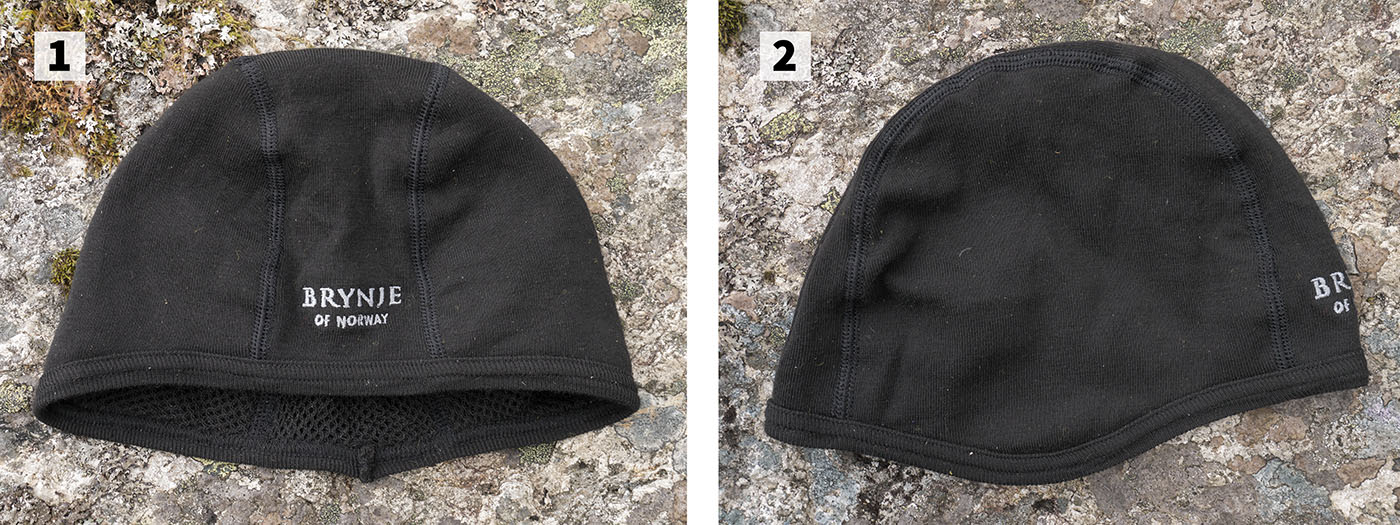 The helmet dip provides good coverage for the ears, but still looks like a regular beanie.
The helmet dip provides good coverage for the ears, but still looks like a regular beanie.
Turned inside out, we can see how Brynje's Super Thermo Helmet Hat mirrors their mesh baselayers.
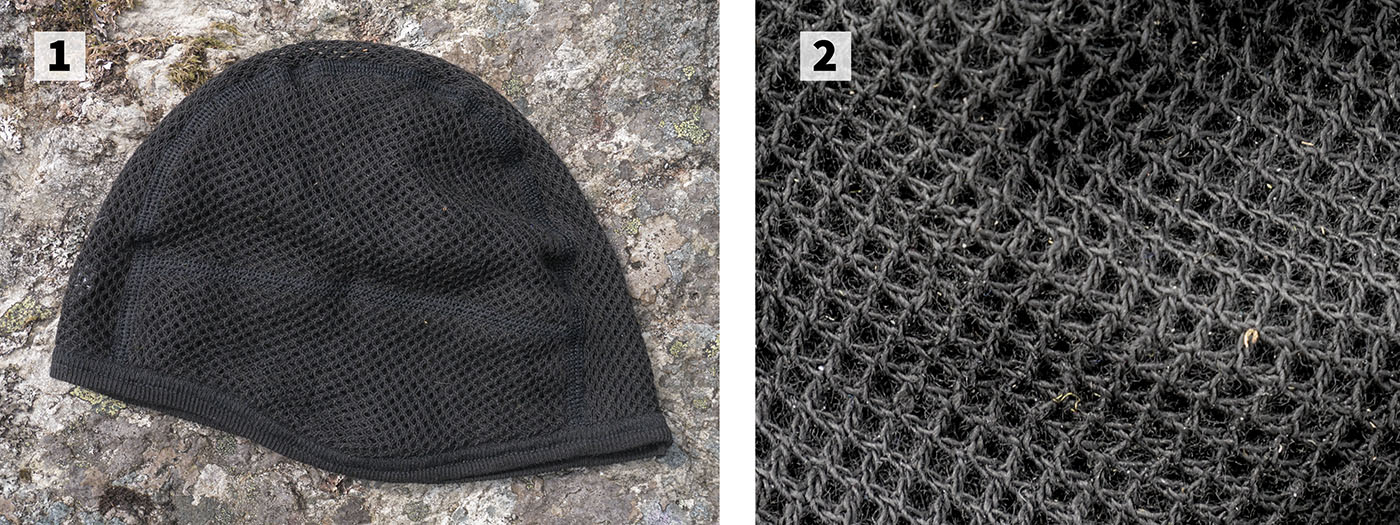 Brynje have given the Super Thermo the baselayer mesh treatment, boosting the hat's thermo-regulating properties.
Brynje have given the Super Thermo the baselayer mesh treatment, boosting the hat's thermo-regulating properties.
Here is Brynje's description of their polypropylene "mesh-tech"
Super Thermo mesh effectively regulates body temperature. At times of high activity, the mesh ensures air circulation and transports excess moisture and heat away from the body. At times of low activity or during periods of rest, the mesh cells retain warm air forming an uninterrupted layer of insulation next to the skin. [...] worn and trusted by the Norwegian Armed Forces, polar explorers, outdoor enthusiasts and professionals with high-performance requirements.
What's not so apparent in these images, and something we'll capture at a later date, is that when held up to the sky, the heavier weight outer fabric that sits atop the inner mesh is actually not too dense, with not so tight a weave. This likely accounts for the heat transfer out of the mesh, preventing over-heating.
My experience of using the Super Thermo was similar to the Varde, in that unless temperatures were warm enough for a beanie to not really be necessary at all, I largely forgot I was wearing it.
Weight, Packability & Sizing
Pictured below (#1) is the thinner and lighter Brynje Tactical Beanie. In our view this would make a fine beanie for cool summer nights around camp or as a supplemental item, but when the weather approached the wintery it was under-powered and clearly not suitable for sub-zero conditions. In addition, there are plenty of ~30g merino-rich (~80%) beanies on the market, and they can do a job, but often their use-case is marginal. When you need some protection, they often don't provide enough and when conditions are suitable, you're in a zone where the hood of your softshell would be sufficient. That said, if it wasn't for the "Tactical", we'd likely not have found the "Thermo".
To give some indication of the thickness of the Brynje Thermo, below it's pictured with the 28g Tactical (#2) and the 57g Mountain Equipment Plain Knitted Beanie (#4).
The Brynje Super Thermo packs down very small and I was able to fit the Thermo, the Tactical and the Brubeck M-Pro Half Balaclava into the small chest pocket of a Mountain Equipment Echo Vest.
The Brynje comes in two sizes:
- S/M (head circumference 54-56 cm) which will fit the majority of women
- L/XL (head circumference 56-59 cm) which will fit the majority of men
Any Negatives?
None yet, but we need to do more testing in sub zero conditions. Thus the "special mention" status of this review and the lack of a final rating for this item. We'll update this review when we've completed the upcoming winter kit test.
2. Balaclava: Brubeck M-Pro Half Balaclava
Datasheet
| Materials: Nylon (Polyamide) / Merino Wool / Elastane | 56% / 42% / 2% |
| Available Sizes (L/XL would fit most adult males) | S/M, L/XL |
| Weight (L/XL, measured) | 36g |
| Manufacturer RRP (Euro conversion) | ~ £23.00 |
Overview
As we discussed above, once you've got a good active beanie, all the useful stuff in a balaclava is in the bottom half. Enter Brubeck's M-Pro Half Balaclava (M-Pro HB from hereon), the result of some clear thinking on Brubeck's part (and finding it, a good deal of research on ours).
Brubeck are a Polish company that use the same high-tech Italian machinery as the Dutch brand Megmeister to make baselayers and a range of accessories.
Their M-Pro HB is a light, stretchy, comfortable neckgaiter-facemask made from a sensible balance of merino wool, nylon and elastane. It solves the ill-fitting issue that plagues many balaclavas; it negates the "flip-top" design choice that some implement poorly and others not at all; and perhaps most importantly, it provides a generous breathing vent (pictured below #1 and #3) which accommodates both nose and mouth and doesn't seem to impede the intake and exhalation of air at all.
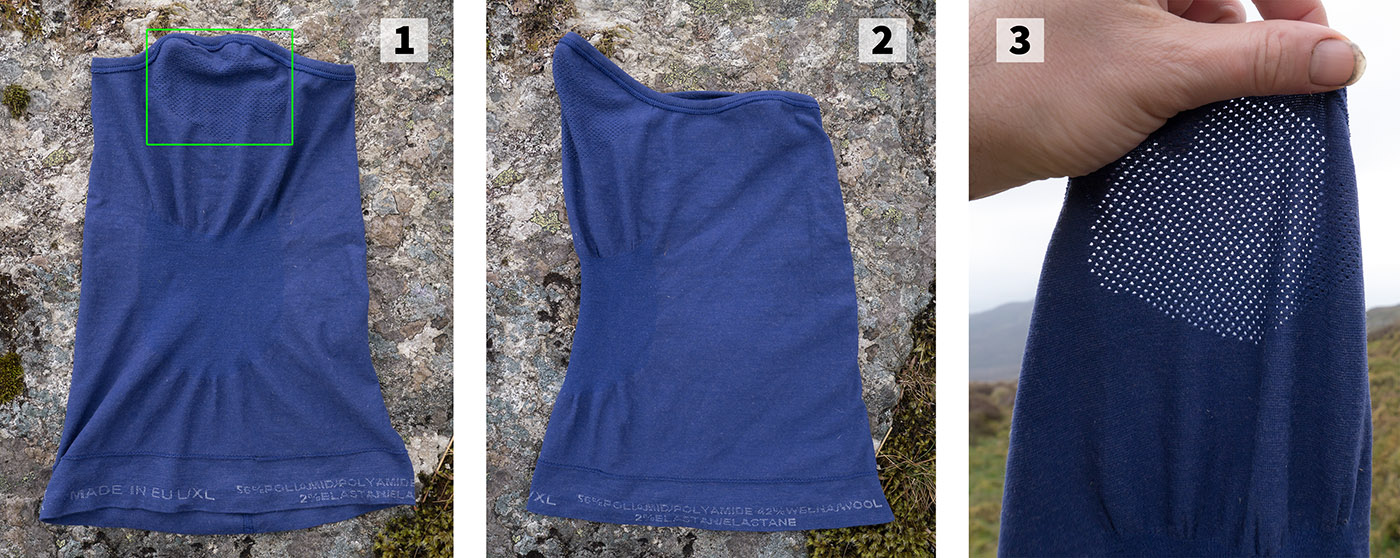 Brubeck gave their M-Pro HB a generous vent to cover the mouth and nose.
Brubeck gave their M-Pro HB a generous vent to cover the mouth and nose.
The M-Pro HB fulfills the "just enough, but not too much" criteria outlined above. There's enough protection to take the edge off a biting wind, but not too much that you overheat. This half balaclava seems to be a popular choice among motorcyclists and skiers alike; both groups need to counter strong, cold winds without fogging their eye wear.
We've only tested this item with goggles in a simulated environment, not yet in the wild. We need to do more sub-zero testing before we can provide a final assessment, but so far, the M-Pro HB looks very promising indeed. If we find it's a fraction under-powered in more extreme cold, it's the kind of item one could pair with a simple balaclava like Sub Zero's excellent lightweight polypropylene Meraklon Balaclava.
For those that require a balaclava for serious, high altitude mountaineering, our recommendations is Black Yak's Mountain Shemagh Balaclava.
Fit & Function
The M-Pro HB works well as a simple neck-gaiter (pictured right, #4) when the face-mask is not required. When you need a face-mask, there's really three settings, each of which functioned well in our kit test. I tended to wear the M-Pro HB as pictured in #2.
The combination of the Brynje Super Thermo Helmet Hat and the M-Pro Half Balaclava seem made for one another and we look forward to throwing them into some harsh sub-zero conditions this winter.
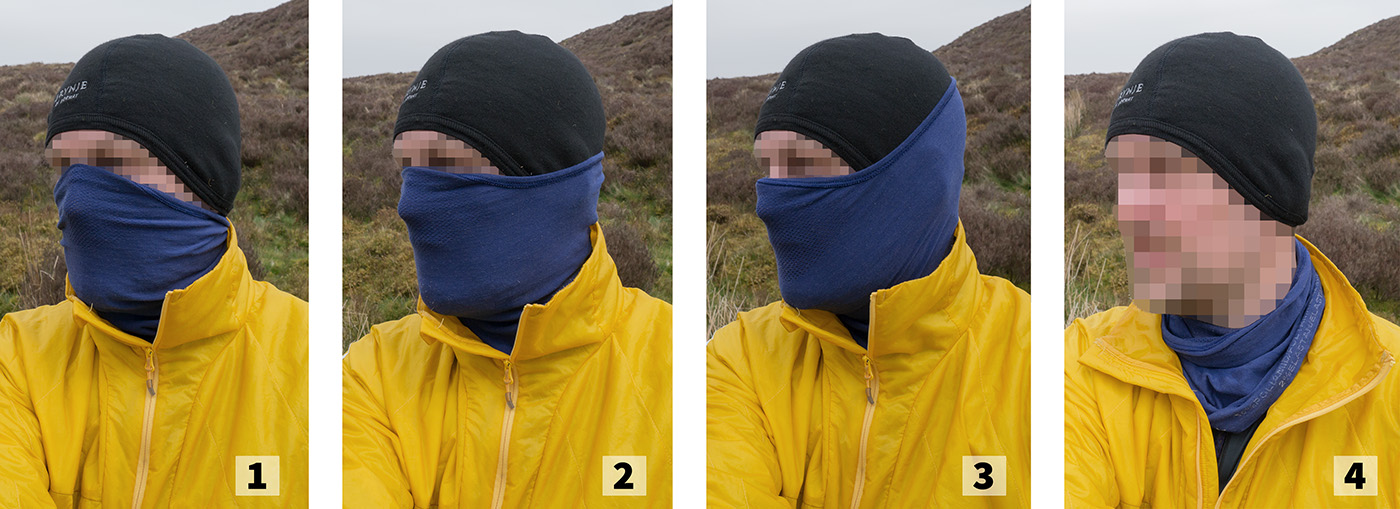 The M-Pro will fit most users and can be fitted in a number of ways to provide more or less protection.
The M-Pro will fit most users and can be fitted in a number of ways to provide more or less protection.
Weight, Packability & Sizing
The M-Pro HB weighs in at just 36g (size L/XL) and takes up hardly any space in a pocket or belt bag. In winter, it's the kind of item you'd put on in the morning with your baselayer and remove at night.
The Brubeck M-Pro Half Balaclava comes in two sizes:
- S/M which will fit the majority of women
- L/XL which will fit the majority of men
Any Negatives?
None yet, but we need to do more testing in sub zero conditions. Thus the "special mention" status of this review and the lack of a final rating for this item. We'll update this review when we've completed the upcoming winter kit test.
Part 2: Caps
Summary Datasheet: Weights & Prices (RRP)
| 1. Mountain Equipment Squall Cap (One Size, stated / measured) | 60g / 58g | £25.00 |
| 2. Searching | 0g / 0g | £0.00 |
What Do We Want From A Cap?
There's not a great deal going on with a cap; here's our modest requirements:
- A good sized, deep peak (brim or visor).
- A sensible and functional adjustment mechanism.
- A fabric and weave with a good balance between breathability and wind resistance.
- A fabric with a good degree of stretch to accommodate other winter headwear such as balaclavas and/or beanies.
- A material that has a DWR treatment and/or accepts custom proofing.
- Something that packs down as small as possible.
Although the above requirements were written in our review of a "cold-weather" cap, it's largely true across the board. Having used a number of softshell caps, we ended up switching between two excellent examples, both made by Mountain Equipment:
- The Tuolumne Cap (now discontinued and archived)
- The Squall Cap
Since ME discontinued the Tuolumne we've all been using the Squall across a wide range of conditions and the only time it fails is when its seriously hot (30℃ and above). Thus, in this section we have set aside some space for a Hot Weather Cap - a very lightweight, split cap with a deep peak (brim or visor). Mountain Equipment made such a cap and then screwed it up - so we're still looking.
1. Softshell Cap: Mountain Equipment Squall Cap
Datasheet
| Materials: Exolite 125 stretch double weave (Nylon / Elastane) | 94% / 6% |
| Available Sizes | One Size |
| Weight | 58g |
| Manufacturer RRP | £25.00 |
Overview
When Mountain Equipment made the Tuolumne Cap we oscillated between using it and the Squall and could never really decide which we preferred. The Tuolumne had vent holes to prevent overheating but the Squall had a deeper peak. Having used the Squall in all conditions for a good number of years, we can happily say it's a fantastic all-rounder and, now the Tuolumne has been discontinued, the problem of deciding between them is moot. The Squall is the undisputed champion of softshell caps.
The Squall cap is made from Mountain Equipment's Exolite 125, the same durable, stretch, double weave softshell fabric (94% nylon, 6% elastane) used on their excellent Echo Hooded Jacket.
If you've seen Scramble's reviews over the last few years you'll have seen the ubiquitous Squall pictured over and over again, so we're not going to adorn this review with numerous images (although it's already appeared numerous times anyway).
Simply put the Squall fulfills all the requirements laid out above, and has never let any of the Scramble team down, a great performer that like all the best kit, is ever-present and goes largely unnoticed.
Any Negatives?
None. Just get one.
Conclusion & Rating
The Mountain Equipment Squall Cap is what you'd get if you made a Ronhill Split Cap for sub zero and all-round mountain conditions. It provides an ideal balance between wind resistance and breathability; it's extremely comfortable, packable, light weight and durable. The Squall is made to Mountain Equipment's usual high standards and is our top pick in the all-round Softshell Trekking Cap category. Which is probably a cue for them to cease its production.
Rating (out of 10)
* The value score is derived from two factors:
1) Competitive Market Price (CMP). This represents our judgement of a competitive online price point if we were to stock the item. e.g. if we feel we would need to sell an item at 40% off (i.e. 60% of its full RRP) to be competitive, then our CMP score will be 6/10.
2) Customer Value Price (CVP). We then make an honest appraisal of the maximum price we would be willing to pay for the item (and we're mean). So if we'd pay 80% of its RRP our CVP score would be 8/10.
We then average the two scores to get our final value score, which in our example would be 7/10.
2. Hot Weather Cap: Search In Progress
We Still Haven't Found What We're Looking For
We're not sure if Mountain Equipment became aware of a sudden influx of championship jockeys into the climbing arena or someone in their design department was having a really bad day, but whatever the reason, Mountain Equipment "fixed" what was unbroken and as such we're still looking for a simple, lightweight split cap for active use in hot conditions. A super-lightweight Squall Cap would be ideal ... wait, isn't that the Aerofoil?
It was, but it ain't anymore.
All Product Images
Last Updated: 29/05/24

